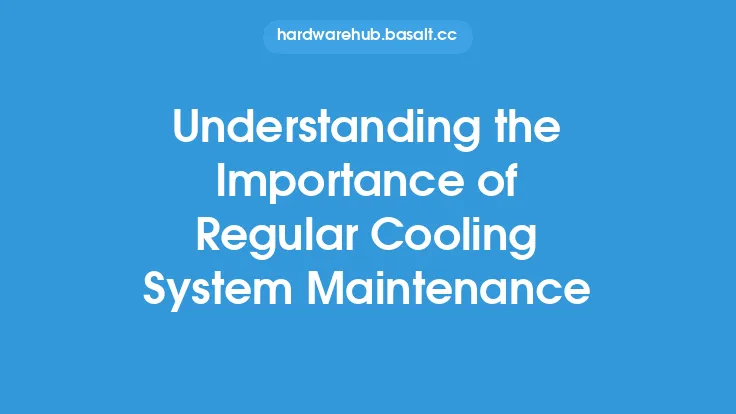Scanners are an essential tool in many industries, including healthcare, finance, and education, as they enable the efficient and accurate digitization of documents, images, and other materials. However, like any other device, scanners require regular maintenance and calibration to ensure they continue to function optimally. Neglecting scanner maintenance and calibration can lead to a range of problems, including poor scan quality, reduced productivity, and even equipment failure. In this article, we will explore the importance of scanner maintenance and calibration, and provide guidance on how to perform these tasks effectively.
Introduction to Scanner Maintenance
Scanner maintenance is a critical aspect of ensuring the longevity and performance of a scanner. Regular maintenance helps to prevent dust and debris from accumulating on the scanner's internal components, which can cause problems with scan quality and even lead to equipment failure. There are several key aspects of scanner maintenance, including cleaning the scanner's glass plate and internal components, checking and replacing worn or damaged parts, and updating the scanner's software and firmware. By performing these tasks regularly, users can help to ensure their scanner continues to function optimally and provide high-quality scans.
The Importance of Calibration
Calibration is another critical aspect of scanner maintenance, as it ensures that the scanner is producing accurate and consistent scans. Calibration involves adjusting the scanner's settings to ensure that it is capturing images and documents with the correct color, brightness, and contrast. This is particularly important in industries where accurate color representation is critical, such as in graphic design and photography. Calibration can be performed using a variety of methods, including using calibration targets and software. By calibrating their scanner regularly, users can ensure that their scans are accurate and consistent, and that they meet the required standards for their industry.
Types of Scanner Calibration
There are several types of scanner calibration, including optical calibration, color calibration, and geometric calibration. Optical calibration involves adjusting the scanner's optics to ensure that it is capturing images and documents with the correct focus and resolution. Color calibration involves adjusting the scanner's color settings to ensure that it is capturing images and documents with the correct color representation. Geometric calibration involves adjusting the scanner's settings to ensure that it is capturing images and documents with the correct size and orientation. Each type of calibration is important, and users should perform all three types of calibration regularly to ensure their scanner is functioning optimally.
Best Practices for Scanner Maintenance and Calibration
To ensure their scanner continues to function optimally, users should follow best practices for maintenance and calibration. This includes cleaning the scanner's glass plate and internal components regularly, checking and replacing worn or damaged parts, and updating the scanner's software and firmware. Users should also calibrate their scanner regularly, using a variety of methods, including calibration targets and software. Additionally, users should follow the manufacturer's guidelines for maintenance and calibration, and should consider seeking professional assistance if they are unsure about how to perform these tasks.
Common Issues with Scanner Maintenance and Calibration
There are several common issues that can arise with scanner maintenance and calibration, including poor scan quality, reduced productivity, and equipment failure. Poor scan quality can be caused by a range of factors, including dust and debris on the scanner's internal components, incorrect calibration, and worn or damaged parts. Reduced productivity can be caused by scanners that are not functioning optimally, requiring users to rescan documents and images multiple times. Equipment failure can be caused by neglecting maintenance and calibration, leading to costly repairs or even replacement of the scanner. By following best practices for maintenance and calibration, users can help to prevent these issues and ensure their scanner continues to function optimally.
Advanced Scanner Maintenance and Calibration Techniques
For users who require more advanced scanner maintenance and calibration techniques, there are several options available. This includes using specialized cleaning solutions and tools to clean the scanner's internal components, and using advanced calibration software to adjust the scanner's settings. Additionally, users can consider using third-party maintenance and calibration services, which can provide expert assistance and support. By using these advanced techniques, users can help to ensure their scanner is functioning at the highest level, and that they are producing high-quality scans.
Conclusion
In conclusion, scanner maintenance and calibration are critical aspects of ensuring the longevity and performance of a scanner. By following best practices for maintenance and calibration, users can help to prevent common issues, such as poor scan quality and equipment failure, and ensure their scanner continues to function optimally. Whether you are using a scanner for personal or professional purposes, regular maintenance and calibration are essential for producing high-quality scans and ensuring the scanner continues to function at the highest level. By understanding the importance of scanner maintenance and calibration, and by following the guidance provided in this article, users can help to ensure their scanner remains a valuable and reliable tool for years to come.





